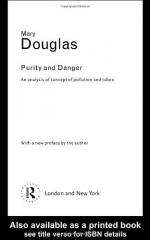|
This section contains 996 words (approx. 3 pages at 400 words per page) |

|
Chapter 9 Summary and Analysis
Harmony within society is assured externally as well as internally. Internal lines are assured through collaboration. To assure that social life is preserved, sexual collaboration needs to be maintained. The internal lines need to be straight and adulteries as well as incest can destroy such lines. The most important social distinction in primitive cultures is the distinction between sexes. Well organized cultures have stricter rules about the relations between men and women. If sexual roles are directly enforced, sex is pollution-free. The Walbiri of Central Australia use force to ensure preservation with strict rules regarding taking care of the elderly. Seniors have power over the young and women are subjected to men. Woman are subject to their husbands and can be beaten and even killed by them without retribution. Women are in no position to play men against one another. There...
(read more from the Chapter 9 Summary)
|
This section contains 996 words (approx. 3 pages at 400 words per page) |

|




